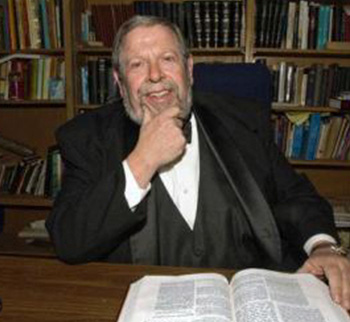The story of the expulsion of Spanish Jews is pretty well known. In 1492, after about 100 years of persecution and forced conversions, King Ferdinand and Queen Isabella ordered the Jews of Spain to leave.
An estimated 200,000 departed but tens of thousands of others remained as Christian converts.
One study, which has been disputed, suggested that nearly 20 per cent of the people in Spain and Portugal possess DNA reflecting a Sephardi Jewish heritage.
Many of those who remained practiced Judaism in secret – the so-called crypto-Jews (or hidden Jews). Some departed for the new world, heading for border areas where they would be far from those who would look too closely as to how they lived their lives.
That’s where Rabbi Stephen Leon comes into this story. In 1986, Rabbi Leon, a native of Brooklyn, N.Y., moved to the west Texas city of El Paso, across the border from Juarez, Mexico. Within days, he experienced three incidents in succession that led him to further study the fate of crypto-Jews, also known as anusim, the Hebrew word for “forced ones.”
Rabbi Leon will tell the story of hidden Jews in an address at Congregation Darchei Noam on March 9.
Shortly after his arrival in El Paso, Rabbi Leon received a phone call from a Mexican Catholic man in Juarez who had some questions for him.
They met at his synagogue, and this is the story Rabbi Leon tells. The man’s grandmother had just died. Together they had shared a ritual every Friday night ever since he was a little boy. His grandmother would take him to a room in private, light two candles and say some prayers in a language he didn’t understand. Then they would rejoin the rest of the family for dinner.
When he mentioned the weekly ritual to his family, they didn’t want to talk about it, though they referred him to a local priest for an answer. The priest told him that hundreds of Catholic women in Juarez perform the same ritual, but he should see a rabbi to explain it.
So he asked the rabbi, “What does this mean?”
It’s actually a Jewish custom, the rabbi explained.
When he heard that, “I thought he was going to fall off his chair,” Rabbi Leon said.
The fellow had grown up as a Catholic with no idea what a rabbi was, let alone what the Spanish Inquisition or the Spanish expulsion were.
The Juarez incident was the first of three in succession that led the rabbi to an interest in anusim. The spiritual leader at Congregation B’nai Zion, a Conservative synagogue, he’s also known as rabbi for the crypto-Jews of the southwestern United States.
Over the years, more anusim have come forward, reclaiming their heritage, while at the same time, there has been outreach toward them.
Rabbi Leon cites Rabbi Juan Mejia, who hails from Bogota but now lives in Oklahoma City, as a descendant of anusim who has assisted others in Latin America reclaim their past and convert to Judaism.
Rabbi Mejia studied in Jerusalem and is the first descendant of anusim to be ordained as a rabbi. He regularly visits communities in South America, Spain and Mexico, advising crypto-Jews about their heritage and how to return to the Jewish fold.
The Internet and social media are useful tools in keeping in touch with anusim, and they’re used by anusim to find more materials to help them connect to Judaism, Rabbi Leon said.
For his part, Rabbi Leon was instrumental in organizing the Sephardic-Hispanic Anousim Learning Center in El Paso, and he collaborates with Sonya Loyo, a returned Jew, in the annual Sephardic Anousim Conference.
Rabbi Leon has converted 60 families to Judaism through the beit din he operates, but he acknowledges that many anusim bristle at the requirement that they convert. He can understand why.
“Do they have to convert to something that was stolen from them?” he said.
So how many anusim are there?
There is no definitive answer, he said. The exact number of Jews who were lost to Judaism – either expelled, converted or killed – is estimated to range from 200,000 to 800,000. (Other sources put the number who converted at close to 50,000.) If you take a middle number, say 300,000 to 400,000 and extrapolate from 1492 to today, there might have been 100 million Jews alive today, he suggested.
It’s all very speculative, Rabbi Leon acknowledged. But Latinos are a fast-growing population, which means there are many potential Jews out there, he said.
Even for those interested in rejoining the Jewish People, many constraints arise.
“People have had difficulty being accepted by the Jewish community and they face rejection by their Catholic families.” They’ve been told they will go to hell, Rabbi Leon said.
Still, 500 years of tenacity are difficult to ignore. The first fellow he met, the man from Juarez, attends Yom Kippur services at his shul every year.
But he comes alone.
